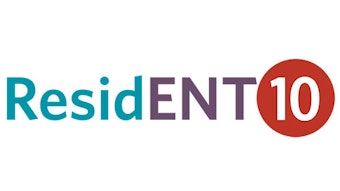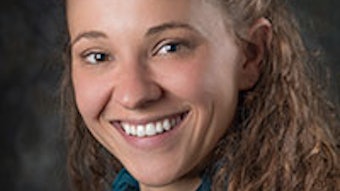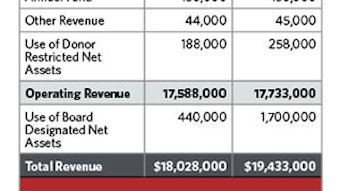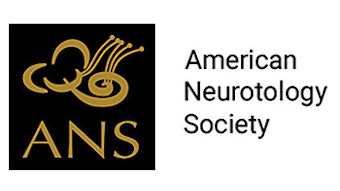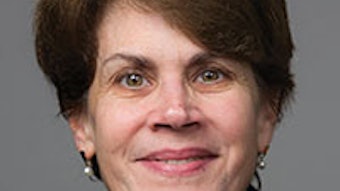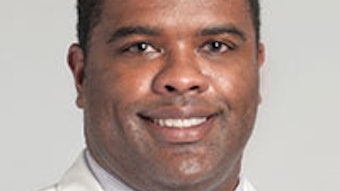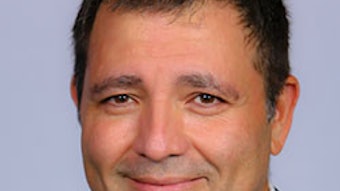June is National Dysphagia Awareness Month: Dysphagia in aging
Dysphagia is the symptom of difficulty swallowing and presents along a spectrum from mild to life-threatening manifestations. Swallowing dysfunction is commonly a consequence of co-existing medical conditions or physical alterations. It is important to remember that healthy aging does not portend dysphagia, but rather as individuals acquire more illness or injury as they enter later decades of life, swallowing dysfunction is more prevalent among the elderly.
Submitted by the AAO-HNS Airway and Swallowing Committee
Dysphagia is the symptom of difficulty swallowing and presents along a spectrum from mild to life-threatening manifestations. Swallowing dysfunction is commonly a consequence of co-existing medical conditions or physical alterations. It is important to remember that healthy aging does not portend dysphagia, but rather as individuals acquire more illness or injury as they enter later decades of life, swallowing dysfunction is more prevalent among the elderly.1 It’s estimated that up to 20 percent of individuals over 50 years and nearly all individuals reaching 85 years will experience some degree of swallowing alteration.2 Among nursing home residents, the prevalence is highest with over 59 percent of long-term inhabitants understood to have dysphagia.3 In fact, effects from swallowing impairment are the leading cause of death in conditions such as stroke, dementia, and Parkinson’s disease.4,5 The clinical and societal impact of swallowing impairment in the elderly will continue to grow as the U.S. population over 65 years is expected to double by 2050.6 Unsurprisingly, during our lifetimes, we will all be affected personally by dysphagia related to aging.
The evaluation and management of dysphagia in the elderly is a multidisciplinary responsibility. The team includes primary care physicians, speech language pathologists (SLP), otolaryngologists, nurses, dieticians, and caregivers. Older adults may attribute their swallowing symptoms to a product of aging when in fact dysfunction may be related to an underlying condition. This misunderstanding might result in delay in accurate assessment and appropriate management. Among aging individuals, goals of dysphagia care include timely recognition of swallowing impairment, accurate assessment with diet allocation, and prevention of illness or malnutrition.

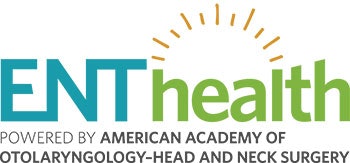
- What Causes Dysphagia?
- What Are the Treatment Options?
- What Questions Should I Ask My Doctor?
Find these answers and more on ENThealth.org, the site that offers a roadmap for consumers seeking health-related information about the ear, nose, throat, and head and neck conditions like dysphagia. All articles, videos, and content are developed in concert with ENT physician experts, including teams of clinician experts.
Share this resource with your patients https://www.enthealth.org/conditions/dysphagia/
Accurately identifying swallowing impairment is critical to tailoring management and preventing harmful health consequences. Common indicators of swallowing dysfunction include choking with meals, altered voice quality, coughing, pneumonia, and unintentional weight loss. Some elderly individuals may lack the capacity to communicate such symptoms and therefore, screening for dysphagia in this high-risk population is important. Furthermore, patients with certain conditions known to be associated with swallowing impairment should likewise be screened, including those with stroke, traumatic brain injury, dementia, neurodegenerative disease, COPD, and head and neck cancer, among others. Such assessments begin with clinical “bedside” evaluations, which survey level of cognition, ability to self-feed, fine motor skills, anatomic structures, and oral bolus preparation.
Frequently, evaluation proceeds to instrumental assessments, most commonly videofluoroscopic swallow study (VFSS) or flexible endoscopic evaluation of swallowing (FEES). Both instruments are widely used and have shown to be reliable tools for assessing structural, temporal, motor, sensory, and safety aspects of swallowing in the elderly.7 Available literature suggests that many characteristics of swallowing evolve with healthy aging. Examples include prolonged pharyngeal and esophageal swallowing phases, decreased laryngeal motion, and increased presence of cervical osteophytes and cricopharyngeal bars.8, 9, 10, 11 Recent data suggest that despite such changes in otherwise healthy elderly individuals, swallowing efficiency is typically maintained. However, there continues to be conflicting evidence regarding the preservation of swallowing safety through healthy aging, as measured by the penetration aspiration scale.1 Nevertheless, elderly people who are deconditioned, frail, medically complex, or otherwise particularly susceptible to swallowing impairment should be carefully assessed with instrumental evaluations to identify abnormalities and deficits that surpass features of healthy aging and threaten their well-being.
Effective management of swallowing impairment in the elderly relies on accurate diagnosis and the participation of an interdisciplinary team.12 It begins with appropriate diet allocation. Among aging individuals, it’s critical to make recommendations while considering their ability to masticate, gain or maintain weight, tolerate secretions, and protect their airway.13 Recent studies suggest that thickened liquids are likely not appropriate for many elderly adults and such recommendations may result in poor adherence, dehydration, and deleterious pulmonary consequences.14 Furthermore, feeding tube recommendations in the elderly must be thoughtfully considered in the context of impairment severity and overall health as restriction from all oral intake caries significant detriment to quality of life.15 Additionally, because it is common for elderly individuals to take multiple medications, difficulty swallowing oral medications should be addressed with pill modifications, alternate formulations, or assistive devices including specialized cups or straws.
When cognitive function allows, SLPs may instruct elderly patients on swallowing maneuvers to mitigate impairments of timing, airway protection, and efficient bolus transit. Importantly, SLPs engage elderly patients in dysphagia therapy, leveraging adjustments to pharyngeal contractility, swallow coordination, and cough strength in order to improve swallowing efficiency and maintain health.16,17 Among older individuals, both Lee Silverman Voice Therapy (LSVT) and Expiratory Muscle Strength Training (EMST) have been used in dysphagia therapy and may confer benefits to cough efficiency and swallowing safety.18 In elderly patients who remain appropriate surgical candidates, procedural approaches may be indicated for certain conditions more commonly encountered in later adulthood, such as cricopharyngeal muscle dysfunction, Zenker diverticulum, hiatal hernia, achalasia, or intractable aspiration.
An expanding and aging elderly population demands awareness of their increased risk for swallowing abnormalities. Though healthy aging does not foretell swallowing dysfunction, the elderly are particularly vulnerable to impairment owing to co-existing medical conditions and deconditioning. Consequently, they demonstrate extreme susceptibility to malnutrition and negative pulmonary sequelae as a result of swallowing dysfunction. Moreover, social isolation and shared stress are commonly experienced by older adults as well as their loved ones and significantly impact quality of life.19 Therefore, routine dysphagia screening of elderly individuals followed by comprehensive diagnostic assessment and appropriate, individualized therapy should be undertaken by an engaged interdisciplinary team.
References
- Jardine M, Miles A, Allen JE. Swallowing function in advanced age. Curr Opin Otolaryngol Head Neck Surg. 2018;26:367-374.
- Leder SB, Suiter DM. An epidemiologic study on aging and dysphagia in the acute care hospitalized population: 2000–2007. Gerontology 2009; 55:714–718.
- Namasivayam-MacDonald AM, Morrison JM, Steele CM, Keller H. How swallow pressures and dysphagia affect malnutrition and mealtime outcomes in long-term care. Dysphagia 2017; 32:785–796.
- Gonzalez-Fernandez M, Daniels SK. Dysphagia in stroke and neurologic disease. Phys Med Rehabil Clin N Am. Nov 2008;19(4):867-888.
- Barer DH. The natural history and functional consequences of dysphagia after hemispheric stroke. J Neurol Neurosurg Psychiatry. Feb 1989;52(2):236-241.
- https://www.census.gov/prod/2014pubs/p25-1140.pdf
- de Lima Alvarenga EH, Dall’Oglio GP, Murano EZ, Abraha˜o M. Continuum theory: presbyphagia to dysphagia? Functional assessment of swallowing in the elderly. Eur Arch Otorhinolaryngol 2018; 275:443–449.
- Namasivayam-MacDonald AM, Barbon CEA, Steele CM. A review of swallow timing in the elderly. Physiol Behav 2018; 184:12–26.
- Miles A, Clark S, Jardine M, Allen J. Esophageal swallowing timing measures in healthy adults during videofluoroscopy. Ann Otol Rhinol Laryngol 2016; 125:764–769.
- Kendall KA, Leonard RJ, McKenzie SW. Sequence variability during hypopharyngeal bolus transit. Dysphagia 2003; 18:85–91.
- Herzberg EG, Lazarus CL, Steele CM, Molfenter SM. Swallow event sequencing: comparing healthy older and younger adults. Dysphagia 2018; 1–9.
- Leonard R, Kendall K. Dysphagia assessment and treatment planning: a team approach. San Diego: Plural Publishing; 2014.
- McHutchison L, Miles A, Spriggs D, Jayathissa S. Management of feeding decisions in hospitalized adults with severe oropharyngeal dysphagia. Australas J Ageing. 2018;37:E120-E126.
- Seshadri S, Sellers CR, Kearney MH. Balancing eating with breathing: community-dwelling older adults’ experiences of dysphagia and texture-modified diets. Gerontologist 2018; 58:749–758.
- Lan SH, Lu LC, Yen YY, et al. Tube feeding among elder in long-term care facilities: a systematic review and meta-analysis. J Nutr Heal Aging 2017; 21:31–37.
- Molfenter SM, Hsu CY, Lu Y, Lazarus K. Alterations to swallowing physiology as the result of effortful swallowing in healthy seniors. Dysphagia 2018; 33:380–388.
- Chase J-AD, Phillips LJ, Brown M. Physical activity intervention effects on physical function among community-dwelling older adults: a systematic review and meta-analysis. J Aging Phys Act 2017; 25:149–170.
- Miles A, Jardine M, Johnston F, et al. Effect of Lee Silverman Voice Treatment (LSVT LOUD1) on swallowing and cough in Parkinson’s disease: a pilot study. J Neurol Sci 2017; 383:180–187.
- Morisaki N. Relationship between swallowing functions and health-related quality of life among community-dwelling dependent older individuals. Japan J Nurs Sci 2017; 14:353–363.\


